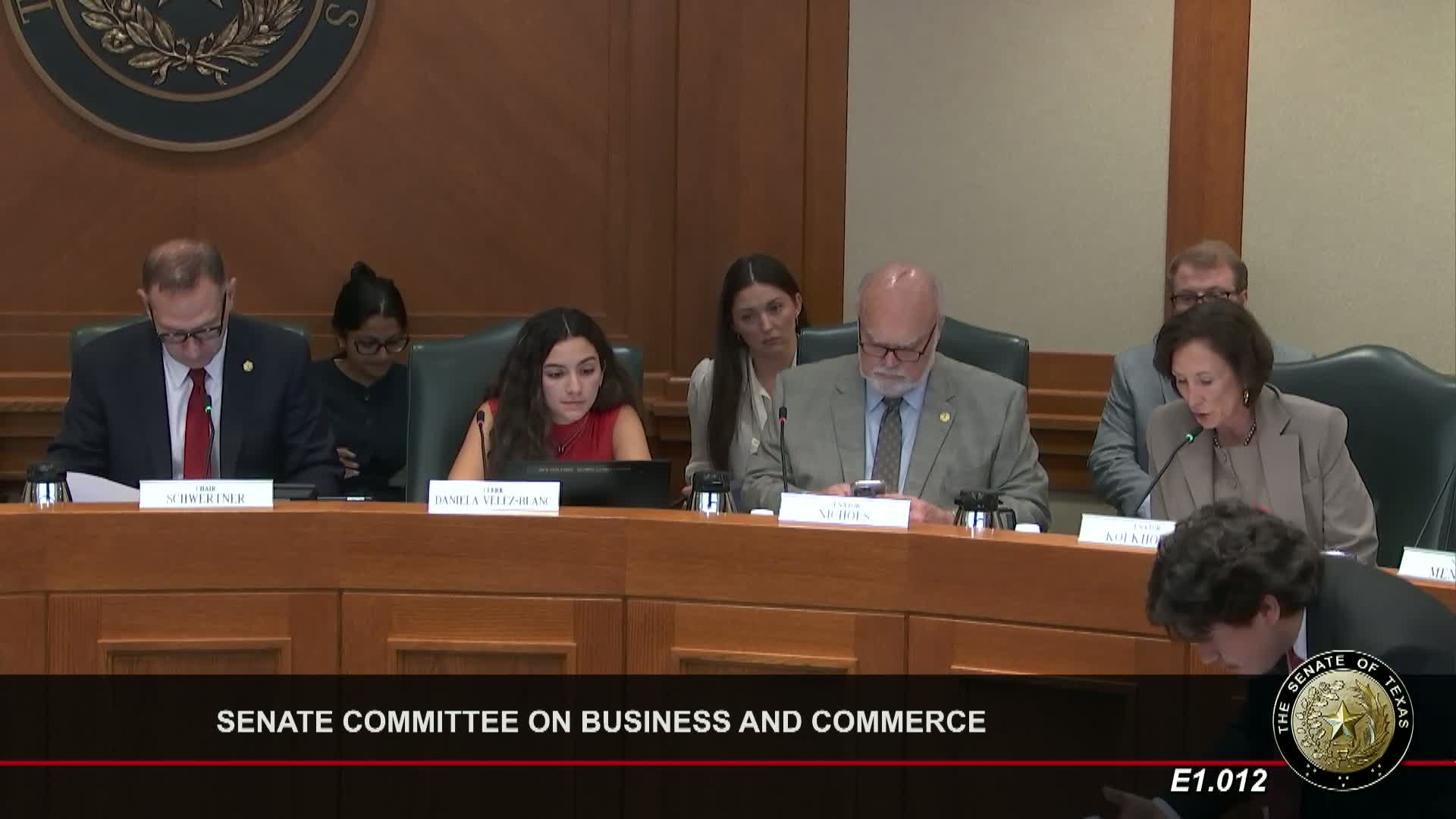Texas Senate approves bill to reform windstorm insurance funding structure
May 15, 2025 | Committee on Business & Commerce, Senate, Legislative, Texas
This article was created by AI summarizing key points discussed. AI makes mistakes, so for full details and context, please refer to the video of the full meeting. Please report any errors so we can fix them. Report an error »

The Senate Committee on Business and Commerce convened on May 15, 2025, to discuss significant reforms to the Texas Windstorm Insurance Association (TWIA) aimed at enhancing windstorm coverage for Texans. The proposed legislation seeks to improve the funding structure for TWIA, particularly in the wake of catastrophic events like Hurricane Harvey.
Senator Kolkhorst, a key proponent of the bill, outlined two primary changes. First, the bill proposes a shift from using securities to state-funded financing for TWIA's excess losses and operating expenses. This new model would authorize up to $500 million in pre-event financing and $1 billion in post-event financing, with a total cap of $2 billion over two years. This approach is expected to provide a more stable and predictable funding mechanism, offering a lower interest rate for taxpayers compared to the current borrowing costs, which range from 10% to 14%.
The second major change involves the introduction of catastrophic surcharges to repay the state-funded financing. Importantly, these surcharges would only apply in the event of a catastrophic event, ensuring that policyholders are not burdened with additional costs during non-catastrophic years. The surcharge would be clearly itemized in policyholder premiums, increasing transparency and accountability in the funding process.
Supporters of the bill, including representatives from the Texas Coalition for Affordable Insurance Solutions, emphasized that the proposed changes would simplify the funding structure and ensure that more premium dollars go directly into the Catastrophic Reserve Trust Fund (CRTF) rather than covering high borrowing costs. This shift is seen as crucial for maintaining the financial health of TWIA and ensuring that it can effectively respond to future disasters.
The committee also heard public testimony in favor of the legislation, highlighting its collaborative nature and the importance of a sustainable funding structure for the coastal economy, which relies heavily on wind and hail insurance.
In conclusion, the proposed reforms to TWIA represent a significant step towards improving windstorm coverage for Texans, enhancing financial stability, and ensuring greater transparency in the insurance process. The committee's discussions will likely pave the way for further legislative action in the coming sessions.
Senator Kolkhorst, a key proponent of the bill, outlined two primary changes. First, the bill proposes a shift from using securities to state-funded financing for TWIA's excess losses and operating expenses. This new model would authorize up to $500 million in pre-event financing and $1 billion in post-event financing, with a total cap of $2 billion over two years. This approach is expected to provide a more stable and predictable funding mechanism, offering a lower interest rate for taxpayers compared to the current borrowing costs, which range from 10% to 14%.
The second major change involves the introduction of catastrophic surcharges to repay the state-funded financing. Importantly, these surcharges would only apply in the event of a catastrophic event, ensuring that policyholders are not burdened with additional costs during non-catastrophic years. The surcharge would be clearly itemized in policyholder premiums, increasing transparency and accountability in the funding process.
Supporters of the bill, including representatives from the Texas Coalition for Affordable Insurance Solutions, emphasized that the proposed changes would simplify the funding structure and ensure that more premium dollars go directly into the Catastrophic Reserve Trust Fund (CRTF) rather than covering high borrowing costs. This shift is seen as crucial for maintaining the financial health of TWIA and ensuring that it can effectively respond to future disasters.
The committee also heard public testimony in favor of the legislation, highlighting its collaborative nature and the importance of a sustainable funding structure for the coastal economy, which relies heavily on wind and hail insurance.
In conclusion, the proposed reforms to TWIA represent a significant step towards improving windstorm coverage for Texans, enhancing financial stability, and ensuring greater transparency in the insurance process. The committee's discussions will likely pave the way for further legislative action in the coming sessions.
View full meeting
This article is based on a recent meeting—watch the full video and explore the complete transcript for deeper insights into the discussion.
View full meeting
